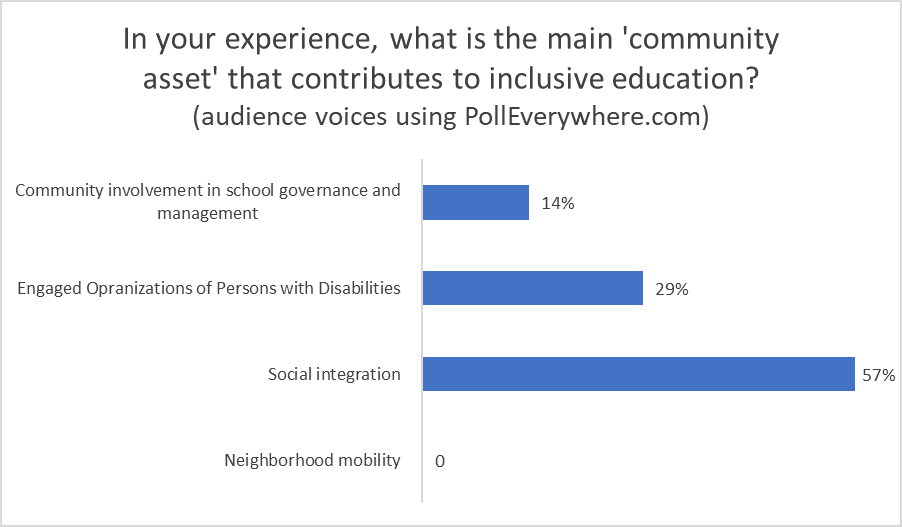This fireside chat between Maria-Beatriz Orlando, and the Global Disability Advisor, Charlotte McClain-Nhlapo explored the relevance of applying the social inclusion lens to disability inclusive education as it focuses on the importance of family, community, and the entire social and education eco-system.
Three main reasons were explored for why the social inclusion lens is a critical dimension for achieving inclusive education:
- From a rights perspective, inclusive education is the fundamental human right of all learners. It is the primary means by which persons with disabilities can lift themselves out of poverty, obtain the means to participate fully in their communities and be safeguarded from exploitation. It is also the primary means through which to achieve inclusive societies.
- It is critical to examine factors outside the classroom and school level and understand how children with disabilities in their communities can get to school and stay in school. What can be some of the factors at the community level that play an implicit, yet critical role in facilitating that a child with disabilities can even get to a school?
- The social determinants of inclusive education must be understood well if we are to successfully operationalize the commitment of 'access to equitable quality education for all. Some of these include the cultural, social norms and values, the social environment, social cohesion, neighborhood safety and mobility, economic conditions at the community level, and food security.

Social norms affect how parents, children and communities interact with the school environment and when social norms dictate a negative understanding of disability, this affects the demand side for education for children with disabilities. When there is a suppressed demand for education due to fear, shame, or a belief that a child cannot perform, this needs to be explored with a social inclusion lens. Building more schools, training more teachers, and giving more information to parents cannot affect outcomes without new interventions that instill behavioral and normative changes which take time and require a lot of resources, focus, and multidisciplinary effort. Community Driven Development models can be explored to change norms at the community level by involving parents, the community, and health workers, interacting in helpful ways.
Useful Resources shared by the audience:
- Learn about World Vision’s work on engaging persons with disabilities in social accountability work to secure better access to rights and services- our Citizen, Voice and Action model. https://www.wvi.org/our-work/socialaccountability
- Advancing Learning and Innovation on Gender Norms (ALIGN), useful resource for people interested in norm change https://www.alignplatform.org/.
- Leveraging community leaders and religious leaders in norm change! See Plan International work: https://plan-international.org/publications/measuring-changes-social-and-gender-norms and CARE’s projects focusing on social norm change: https://insights.careinternational.org.uk/in-practice/social-norms-change
- Special Olympics engages youth with and without disabilities and develops their skills together. This challenges norms about what a "youth leader" looks like in school and community settings and shows that youth with disabilities can and must be empowered and youth of all abilities can work together to make change. Learn more here: https://www.flipsnack.com/SpecialOlympicsGlobalYouth/2020-youth-development-report/full-view.html
- Leonard Cheshire has achieved good results in combatting gender and disability discrimination through working with male advocates in rural Kenya. https://www.leonardcheshire.org/our-impact/stories/how-male-mentoring-changing-girls-education.
- Humanity & Inclusion’s report on horizontal and vertical multisectoral approach with recommendations: https://inee.org/resources/lets-break-silos-now-achieving-disability-inclusive-education-post-covid-world
